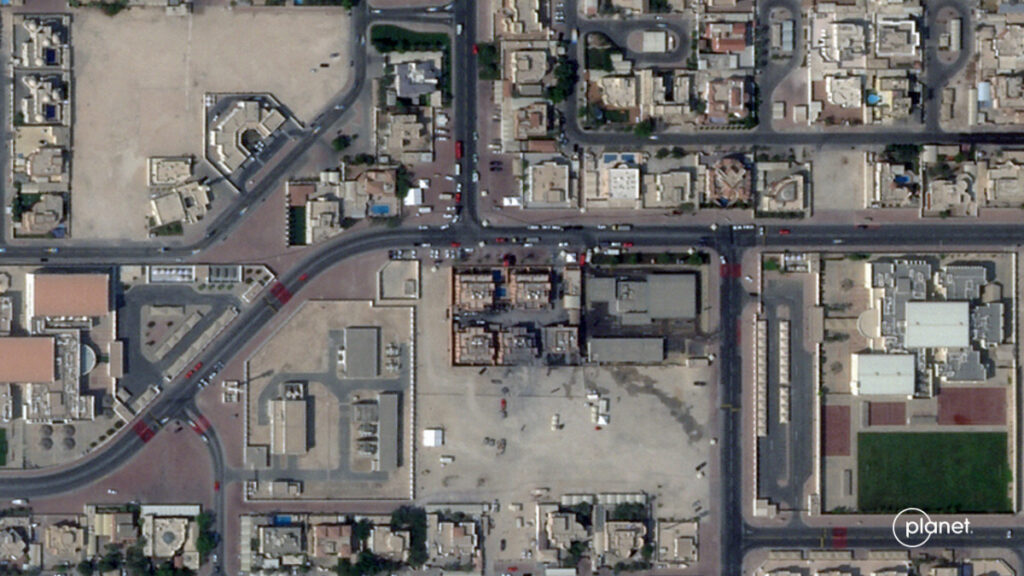Key details are missing about how Israel carried out its unprecedented attack on Hamas leaders in Qatar, raising questions about whether the number of missiles fired attributed to Israel is correct or whether Israel had a team on the ground helping locate the group’s officials.
To begin with, current and former US officials and analysts tell Middle East Eye that the blast site attributed to the Israeli attack is much too small to corroborate several media reports that Israel fired around 10 air-launched missiles into the building.
Some eyewitnesses reported hearing upwards of eight blasts during the attack, but experts say that some of those reports might have been confused with the echoing.
“Based on the public source imagery of the site, we are talking about two or three missiles maximum going into that building,” Michael Knights, a military expert at Horizon Engage, an international consulting firm, told MEE.
Understanding how Israel conducted its attack is important because Prime Minister Benjamin Netanyahu said on Wednesday that Israel could strike Hamas officials abroad again, potentially leaving the door open to attacks in Egypt and Turkey, where they travel.
New MEE newsletter: Jerusalem Dispatch
Sign up to get the latest insights and analysis on
Israel-Palestine, alongside Turkey Unpacked and other MEE newsletters
Israel has been tight-lipped about how it conducted this strike, but US officials who spoke with MEE say that Israel appeared to launch its attack from outside Qatari airspace – a point echoed by many analysts.
Jordan said that no Israeli aircraft violated its airspace during the operation. Israel used Syrian and Iraqi airspace to launch its attack on Iran earlier this summer.
If Israel wanted to refrain from violating Saudi Arabian or Kuwaiti airspace, it could have done the same and fired into Qatar from Iraq, Andrew Curtis, a retired air commodore in Britain’s Royal Air Force and associate fellow at the Royal United Services Institute, told MEE.
MEE has reported that the Trump administration was notified of the attack in advance and did not object to it.
Curtis said that there would have been plenty of opportunities for the US to be aware of the mission, given the detailed planning and time required.
“The suggestion that, oh, this was a target of opportunity and we acted does not hold up,” Curtis said. “This would have been days in planning at minimum.”
What missiles did Israel use?
If Israel fired into Qatar from Iraqi airspace, that would disqualify its use of small-diameter bombs like the GBU-39B, given its short glide range.
Officials and analysts say that the small scale of damage photographed in Qatar disqualifies all but a few types of missiles that would be used in a “stand-off” strike – where war planes fire missiles in the air from a distance to their target.
One of Israel’s smallest air-launched missiles is the Delilah cruise missile. Its warhead is more consistent with the small-scale damage seen in photographs.
Israel killed at least six people – including a member of Qatar’s security forces – but missed its main targets, Hamas’s senior political officials.
The attack failed because Israel bombed a building close to where senior Hamas officials were meeting, but not the exact location. The true meeting point was disguised for security measures, a source told MEE.

Israel’s attack on Qatar eviscerates promise of US security umbrella for Gulf
Read More »
Another option is that Israel used an air-launched ballistic missile, like the Silver Sparrow, with a range of 1,500 kilometres.
Although that kind of missile would normally do much more damage to the target that is visible, Knights said Israel could have “fused” it – meaning that the warhead’s explosive material did not detonate until it was underground. That would have limited shrapnel and the risks of wider damage.
“Israel can do all kinds of things to reduce the explosive charge of the warhead to limit the damage,” he told MEE.
Israel’s F-35I Adir fighter jets are known to carry Delilah cruise missiles and Rampage air-to-ground missiles.
Analysts tell MEE that Israel would likely have used an F-15 or F-16 to carry a Silver Sparrow. That would have compromised stealth features.
Curtis told MEE that Israel’s operation may not have stopped in the air. “They very well could have had spotters on the ground watching that building to see who was arriving,” he told MEE.
One Arab official told MEE that Gulf countries have not ruled out that Israel dispatched a team to the ground in Doha as part of the operation.

